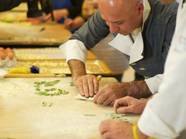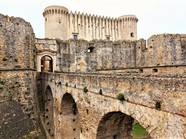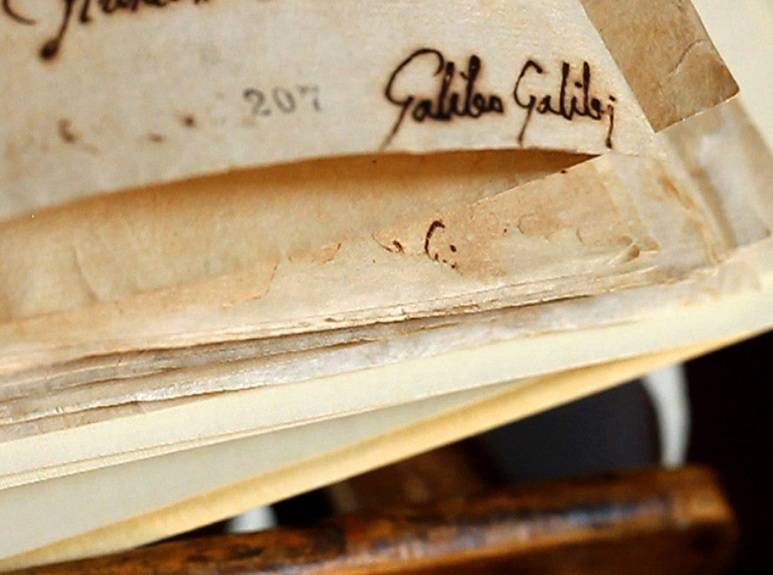“Where the Tall Grasses Grow”: A peek into the secret archives of the Vatican
ROME – For the first time in history the Vatican is offering the Roman public and visitors a peek into its famous “secret archives,” its collection of ancient and modern documents kept rigorously under lock and key in closely guarded halls next to the Vatican Library. The archives—properly known in Latin as Archivum Secretum Vaticanum—were hidden away some four centuries ago on orders of Pope Paul V (1552-1621), a Borghese family aristocrat who had been educated as a lawyer in Perugia and Padua before coming to Rome.
Most unusually, the Vatican has organized an exhibition called Lux in Arcanum, which opened this week in the Capitoline Museum in Rome and will remain until September. On view is a selection of one hundred precious documents selected from among the 35,000 volumes that occupy some 52 miles, or 84 km, of shelf space. Among the treasures which can be seen for the first time is a 180-foot-long parchment scroll from the trial of the Knights of Templar, which took place in Paris between 1309 and 1311. The warrior monks’ order had been accused of heresy, idolatry and sodomy, and was disbanded by Pope Clement V in 1312.
The Vatican Secret Archives have always generated curiosity, and for a sneak preview German TV sent a crew, as did the BBC. Until 1881, when researchers were given entrée for the first time, the secret archives were absolutely prohibited to visitors. Even today, when a thousand or so scholars are allowed entry into the secret archives every year to conduct research, visitors are barred, save for such rare exceptions as members of the British royal family, always welcome and treated to a showing of correspondence between Henry VIII and his desire for a divorce.
One of the most curious of the documents on view is a centuries-old numbered key for the secret encoding of documents. But otherwise the word “secret” referring to the archives is something of a misnomer because the word was originally intended as signifying private as a personal possession of the pope. But in fact, tucked away, and printed on everything from papyrus to silk and even birch bark, are countless truly secret documents. Tantalizing to scholars, they are believed to include those that pertain to the relations between Pope Pius XII and Nazi Germany. Nothing like that is on view inside the Capitoline Museum, but there are plenty of other fascinating documents.
Among the most important documents on view is one signed on May 10 1633 by Galileo Galilei, when he was on trial in Rome for treason. In this document he abjures his theory that the earth circles the sun, which he had written the previous year and published in a treatise called Dialogue Concerning the Two Chief World Systems. Another is a letter from the British Parliament insisting upon Henry VIII’s legitimate request for a divorce, and threatening serious consequences if the Roman Catholic Church does not meet his wishes.
Two on view are from the Northern Hemisphere. In one Abraham Lincoln, at the time just elected President, writes on Feb. 8, 1861, asking for the Vatican state to recognize his envoy Rufus King as the new Minister to the Holy See. More picturesque is the now fading letter in black ink on birch bark dated 29 In the Month of Flowers 1887. The sender’s address is indicated as “In the Place Where the Tall Grasses Grow.” The letter author, Pierre Pilsémont, is the head of the Christian community of Ojibwe (Chippewa) Indians, and he has written to Pope Leo XIII, whom he addresses as “Great Master of Prayer, he who acts in Jesus’s stead.” He thanks the pontiff for having sent to the Ojibwe “a guardian of Prayer,” in the form of the apostolic vicar of Pontiac, Narcisse Zépherin Lorrain.
A number of women who are famous in history are represented. The original abdication declaration signed by Queen Christina of Sweden in 1654 is on view, flanked by dozens of wooden capsules that look like bottle tops but hold, inside, wax seals intended for use to seal documents. Queen Christina, memorably portrayed in a silent film by Greta Garbo and in a pop book by Barbara Cartland, was crowned in 1650 and abdicated only four years later. She passed her crown to her male cousin on grounds that she did not intend to marry and have children; shortly afterward she converted from the Lutheran faith to Catholicism. When she came to Rome the following year she entered through a city gate redesigned specifically for her by Gianlorenzo Bernini at Piazza del Popolo. For the Church, her conversion was a triumph; her father had been the victor of the Thirty Years War, which had pitted Catholic Spain, Austria and Italy against Germany, Sweden, Holland and France. At the signing of the Peace of Westphalia, which ended that devastating war, the papal envoy had been forced to kneel before the Swedish crown (at that time Sweden ruled Germany) in an humiliating acknowledgement of surrender. Once in Rome, however, Christina—an intellectual, refined, arrogant—proved to be difficult to handle. She is believed to have been a Lesbian or an Intersexual.
The second woman represented in the exhibition is Mary Queen of Scots. After no less than twenty years in prison she had just been informed that she would be put to death when she sat down to write a letter to the pope dated Nov. 23, 1586, informing him of this, in French. Adjacent is a bishop’s annotation of the same date guaranteeing that Mary Stuart was indeed the writer of the letter. In it she touchingly wrote the famous words, “In my end lies my beginning.”
A third woman was the imprisoned Marie Antoinette, who wrote her brother-in-law a note describing the difficult conditions of her detention in prison in Paris. She was put to the guillotine on Oct. 16, 1793.








































i-Italy
Facebook
Google+
This work may not be reproduced, in whole or in part, without prior written permission.
Questo lavoro non può essere riprodotto, in tutto o in parte, senza permesso scritto.